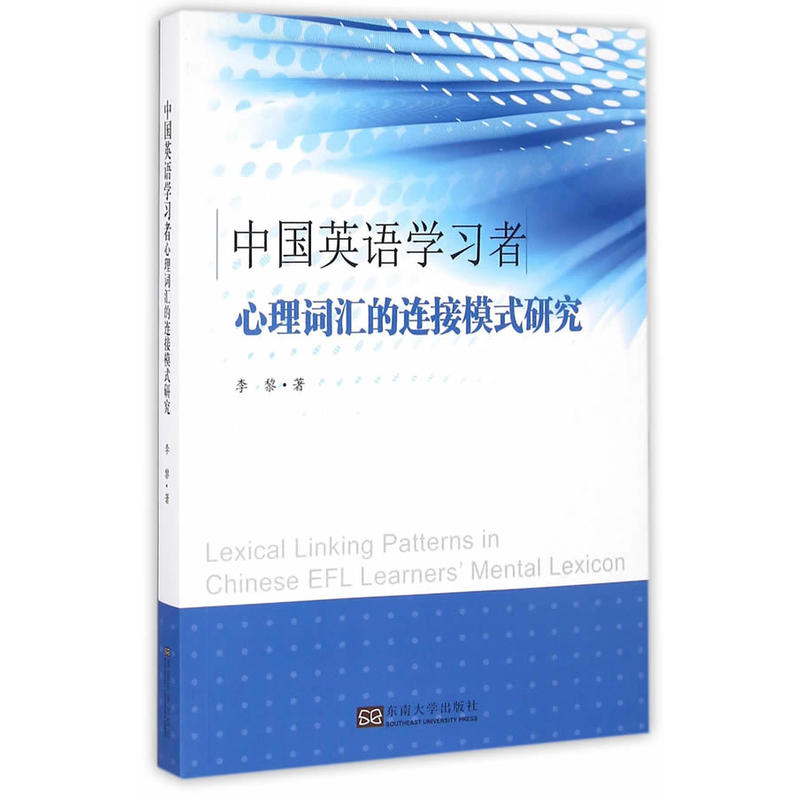- ISBN:9787564168162
- 装帧:暂无
- 册数:暂无
- 重量:暂无
- 开本:32开
- 页数:315
- 出版时间:2016-11-01
- 条形码:9787564168162 ; 978-7-5641-6816-2
本书特色
词汇知识是阅读能力的重要指标,在二语习得中占据*其重要的地位。二语词汇知识研究的中心议题是词汇深度知识的习得。从注重二语词汇量的积累到探索心理词汇网络的构建特征,从词汇多维度解构到借用其他学科的研究方法多视角地探究词汇知识的表征和加工,二语词汇深度知识习得的研究在近半个世纪经历了质的飞跃。其中,热点研究领域是二语与一语心理词汇的关系。在双语心理词汇的诸多研究方法中,由于研究者无法直接观测到学习者二语心理词汇的存储、提取及其与一语词汇的具体连接,故基于反应时的实验逐渐成为众多心理学家和语言学家的*佳选择。在这一研究背景下,李黎*的《中国英语学习者心理词汇的连接模式研究(英文版)》拟基于翻译识别任务中反应时的测量,从词汇变量、目标语言和二语水平三个层面探讨中国英语学习者心理词汇的连接模式。
内容简介
词汇知识是阅读能力的重要指标,在二语习得中占据极其重要的地位。二语词汇知识研究的中心议题是词汇深度知识的习得。从注重二语词汇量的积累到探索心理词汇网络的构建特征,从词汇多维度解构到借用其他学科的研究方法多视角地探究词汇知识的表征和加工,二语词汇深度知识习得的研究在近半个世纪经历了质的飞跃。其中,热点研究领域是二语与一语心理词汇的关系。在双语心理词汇的诸多研究方法中,由于研究者无法直接观测到学习者二语心理词汇的存储、提取及其与一语词汇的具体连接,故基于反应时的实验逐渐成为众多心理学家和语言学家的*佳选择。在这一研究背景下,李黎著的《中国英语学习者心理词汇的连接模式研究(英文版)》拟基于翻译识别任务中反应时的测量,从词汇变量、目标语言和二语水平三个层面探讨中国英语学习者心理词汇的连接模式。
目录
-

茶花女
¥4.2¥12.0 -

你往何处去
¥18.2¥33.0 -

地心游记(纯英文)/床头灯英语.3000词读物
¥5.4¥15.8 -

名著名译英汉对照读本马克.吐温短篇小说选
¥16.0¥28.0 -

呼啸山庄-英语原著版
¥6.8¥18.0 -

了不起的盖茨比(纯英文)/床头灯英语.3000词读物
¥4.5¥12.8 -

包法利夫人(英汉对照)
¥10.4¥29.8 -

小妇人(纯英文)/床头灯英语.3000词读物
¥4.7¥15.8 -

红字(纯英文)/床头灯英语.3000词读物
¥7.0¥12.8 -

英语学习-大家小书
¥13.7¥36.0 -

命案目睹记
¥12.2¥33.8 -

安徒生童话精选
¥23.2¥40.0 -

MADAME BOVARY-包法利夫人
¥13.3¥36.8 -

30天学会全部语法
¥17.9¥49.8 -

好快!10天背完3000英语单词
¥12.8¥29.8 -

超奇迹 分类记 15000韩语单词-韩语入门词汇学习.一站式搞定-(1书+1MP3光盘)
¥15.0¥39.6 -

城堡
¥9.1¥26.0 -

狂恋美剧学口语
¥9.6¥32.0 -

THE LITTLE PRINCE-小王子
¥5.3¥19.8 -

零基础西班牙语入门书
¥10.6¥33.0












